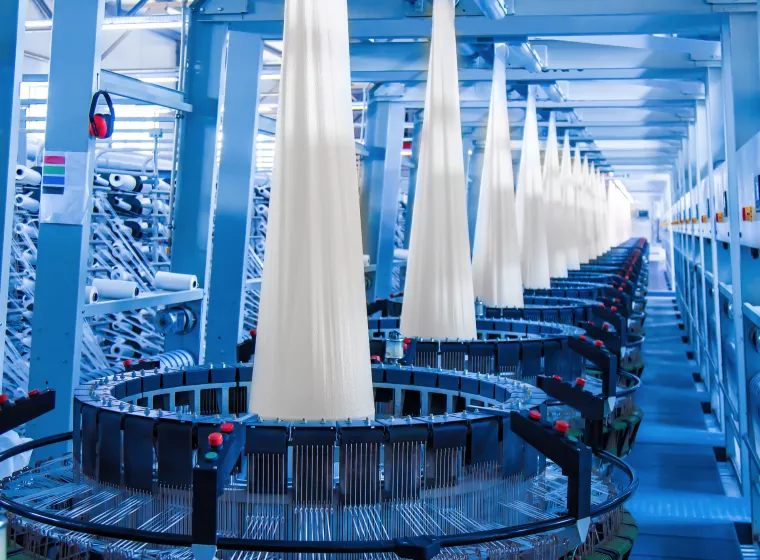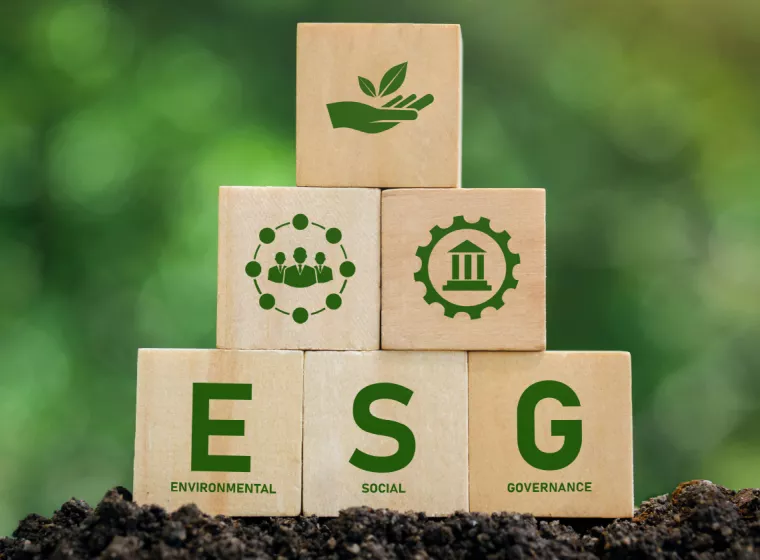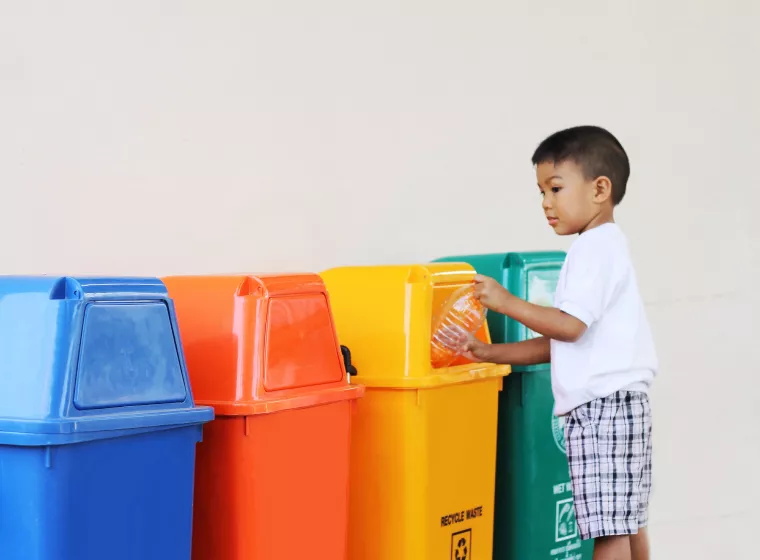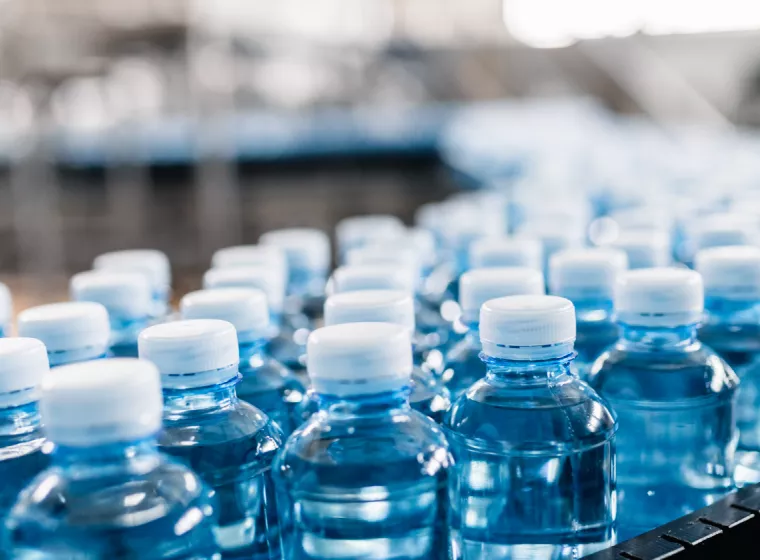March 15, 2024

Designing low-contaminant plastics for enhanced recyclability and performance
Last November, in a potential landmark plastics pollution case, New York Attorney General Letitia James filed a public nuisance lawsuit against a large food and beverage company claiming it is the largest single contributor of plastic waste along the Buffalo River. Specifically, the lawsuit alleges failure to "abate the harm or warn the public that its plastic packaging is a potential source of plastic pollution."
Central to the lawsuit is whether single-use plastic manufactured by the plaintiff poses an environmental threat and whether the plaintiff should be held responsible for educating consumers about possible risks. The case could have significant implications for the information companies are required to communicate about their environmental commitments.
In the meantime, in the absence of any federal law governing single-use plastics or a national requirement for recycled plastic content, a number of states have passed extended producer responsibility (EPR) regulations to reduce the use of single-use plastics, hold manufacturers accountable for plastic waste, and incentivize recyclability. Against this backdrop — and the 2021 Basel Convention Plastic Waste Amendment banning the transnational movement of plastic waste — several states are also implementing requirements to include post-consumer recycled (PCR) resin in packaging and some products (e.g., single-use food service ware).
In response, consumer product and food and beverage companies are pledging to develop (and are piloting) more sustainable designs, largely by improving the recyclability of their products. To accomplish this, most will need to design with product end-of-life and material reuse in mind. However, achieving effective reuse of thermoplastics — a widely used class of polymer that can be repeatedly reformed through the application of heat — has proven challenging.
One of the many challenges in closing the recycling loop is contamination in PCR resin and in the new products manufactured using PCR resin. These contaminants can be introduced through components of the product (e.g., the adhesive used to affix a label to a water bottle), through use of the product (e.g., residual product in a recycled fertilizer container), or through additives to the material that are useful in the initial application but may be undesirable in its next use (e.g., fire retardants in wire cables). This means components, adjacent materials, and additives desirable in the first use can all become undesired contaminants in the PCR resin.
Designing for reuse involved intentionally formulating plastics to decrease contamination and promote recyclability.
Challenges in developing a low-contaminant recycling stream
Constructing a truly circular plastics economy will involve developing intentionally designed thermoplastics that are recyclable into PCR resin. As 80 to 90% of the recovery value of plastic packaging is determined by its design, formulating thermoplastics to manage contaminants in PCR resin can help stakeholders enhance recyclability by extending the lifecycle of plastic and augmenting its recycled value. Yet the additives used in formulation to achieve certain performance goals can themselves contribute to contamination challenges for recycling thermoplastics.
On the one hand, many of the more than 10,500 additives currently in use improve the performance of plastic bottles and other thermoplastic packaging. On the other hand, additives in thermoplastics can become problematic in later use cycles, because recycling thermoplastics by melting combines all the different additives into the PCR resin.
Some of these additives persist in their initial form, while others break down during the recycling process into toxic degradation products. Of particular concern are additives such as phthalates, a class of compounds added to increase the flexibility of plastics, and brominated flame retardants intentionally added to automotive, electrical, and aeronautical applications — but intentionally excluded from applications like food packaging because of their potential for toxicity.
In addition to the propagation of plastic additives in PCR resin, recycled plastics may contain contaminants introduced during their initial use. This can include plastic containers that held pesticides or motor oil as well as items collected after being exposed to the environment. All these types of contaminants can make PCR resin less desirable for subsequent applications that were not anticipated in the original thermoplastics formulation.

Designing thermoplastic packaging and products with intention
Thermoplastics account for approximately 75% of worldwide plastic production, and much of this plastic ends up in landfills. Designing for reuse involves intentionally formulating plastics to decrease contamination and promote recyclability. What additives are present and in what quantities? Do they promote blending and preserve performance without being hazardous in the final PCR material? Will the recyclability of your thermoplastics change once reformulated for applications beyond the first use? What about contaminants that surface further downstream once the PCR material is recycled a third or fourth time?
Other considerations for stakeholders seeking to improve the recyclability of their designs and support a circular plastics economy include:
- Design of packaging that is easy to assemble and disassemble (e.g., pumps and caps): Most packaging products are a combination of more than one component. Are your components designed to support performance in service or the ability to separate at the end of the design life? Are caps or other security features compatible or easily separated?
- Prevention of cross contamination and blending issues by reducing the variety of polymers (and additives): The specific plastic formulation used in the application must balance performance with the ability to blend with other polymers in the recycling process. Designers can choose a single unpigmented plastic over multilayered materials to enhance recyclability. For example, it's becoming more common in the automotive industry to use one plastic — polypropylene — instead of myriad plastics to create car interiors.
- Management of labeling to prevent recycling stream contamination:
- Design easily removed, recyclable labels.
- Label recyclable and non-recyclable parts to inform users of how to dispose of a product. Producers can adjust the messaging to passively direct the fate of their products so consumers know how to recycle them — which may reduce liability for producers.
Know what's in your post-consumer recycled resin
With growing pressure from state regulators and emerging PCR-content requirements in packaging and some products, manufacturers need to know what's in their PCR resin. This can be accomplished by considering the possibility of contaminants with a focus on specific applications.
- Service history: Is the in-service history of the packaging or product known? Is there residue or possible absorption of contaminants in the plastic?
- Collection history: What is known about how the material was collected and sorted? Can the uniformity, consistency, and volume of the recycling stream be determined or improved?
New PCR standards are being developed to assess the required performance metrics and potential risk from contaminants in recycled plastics. Accurate risk evaluations are essential when recycled material is being repurposed for applications that may involve outdoor environments and weathering or contact with skin or food.
Chemical analysis of PCR resin and an assessment of the resulting chemical list can help determine whether the PCR meets performance requirements and purity standards for end use. Industry standards can help inform which analytical methods to use and what materials or chemicals should be analyzed.
By building recyclability into the design phase and throughout the product lifecycle, manufacturers, formulators, and other stakeholders can ensure that their products' end-of-life marks a new beginning that meets performance, safety, quality, recyclability, and sustainability goals.
What Can We Help You Solve?
Exponent's extensive polymers and plastics expertise covers material sourcing, selection, formulation, quality testing, and manufacturing through all stages of the product lifecycle, including end-of-life, helping clients develop sustainability strategies.










![Quality analysis [PSMC]](/sites/default/files/styles/cards_home_card/public/media/images/GettyImages-1221176906.jpg.webp?itok=iXimIDYr)
